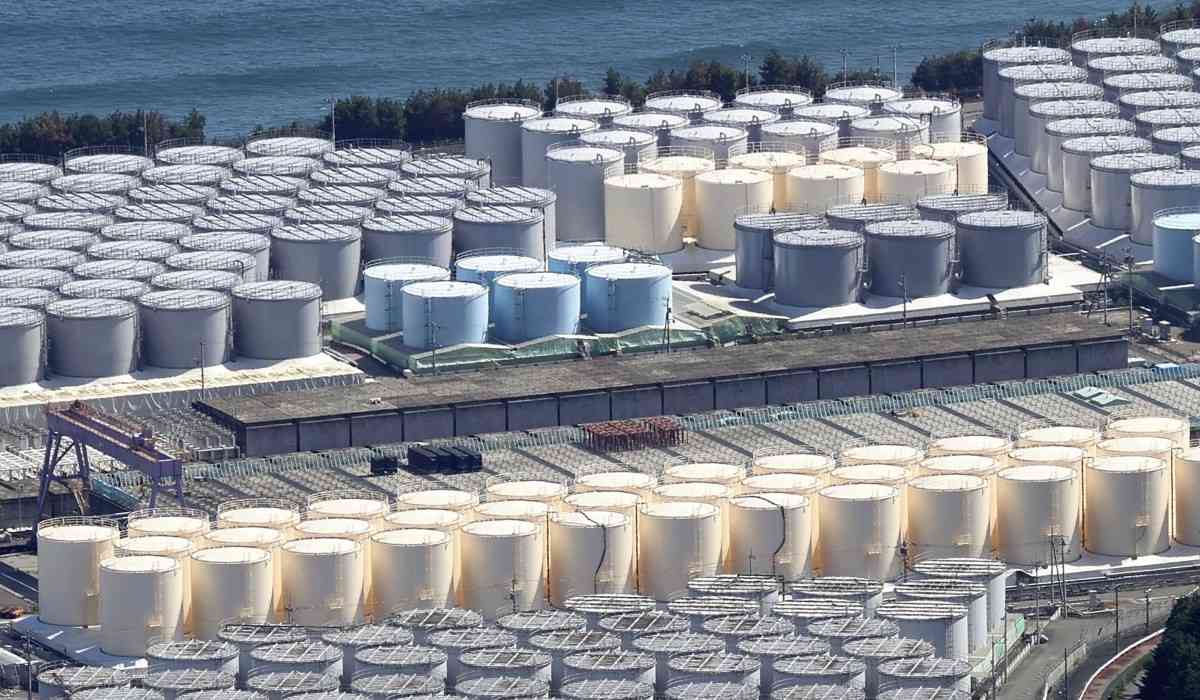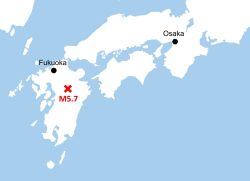TEPCO Plans to Begin Decommissioning Treated Water Tanks at Fukushima N-Plant as Water Release Proceeds Smoothly

Tanks storing treated water at the Fukushima No. 1 nuclear power plant are seen from a Yomiuri Shimbun helicopter in September 2023.
16:57 JST, August 25, 2024
Tokyo Electric Power Company Holdings Inc. plans to begin decommissioning storage tanks of treated water from crippled reactors at the Fukushima No. 1 nuclear power plant next year, as releasing the water into the sea has been smoothly implemented according to plan.
The release of the treated water began in August last year based on scientific grounds, and the international community has closely watched the work.
Before the treated water is released into the sea, TEPCO and the Japan Atomic Energy Agency measure the density of radioactive substances each time and confirm the safety of the release of the water.
After each time that water is released, multiple entities including TEPCO and the Environment Ministry take samples of seawater from a port near the plant and in nearby sea areas to check its quality.
They have also examined fish and seaweed in the area to confirm whether any abnormal conditions have occurred and then announced the results.
The release of treated water is an important task that can affect the removal of melted nuclear fuel debris, which is the key work for decommissioning the reactors.
TEPCO plans to begin decommissioning the water storage tanks in January, as they will be unnecessary due to the release of the treated water.
The company also plans to build a facility to temporarily store debris with high levels of radiation on the land that will be cleared.
TEPCO first plans to remove 21 of the about 1,000 tanks by March 2026. The company will also work to minimize the amount of rainwater that flows into the nuclear reactor buildings in an effort to reduce the amount of polluted water that needs to be treated.
“The release of treated water will continue for decades from now on, and there are many hurdles to clear,” said Prof. Yuji Torikai of Ibaraki University, an expert on nuclear fusion. “It is necessary to safely and firmly make progress without dropping psychological guards.”
On the other hand, aside from the smooth release of the treated water, many problems have occurred at the plant since autumn last year.
On Thursday, preparation for test-basis work to remove debris from one reactor was postponed due to a rudimentary mistake.
“I can’t totally clear away the anxiety about the treated water from the back of my mind,” said a 45-year-old fisherman in Soma, Fukushima Prefecture.
Hiroshi Kainuma, an associate professor of sociology at the University of Tokyo, said that for local residents who experienced the accident 13 years ago, even a tiny problem is enough to cause anxiety or distrust.
“TEPCO is required to eliminate the possibility of problems occurring in advance,” he said.
"Society" POPULAR ARTICLE
-

M4.9 Earthquake Hits Tokyo, Neighboring Prefectures
-

M7.5 Earthquake Hits Northern Japan; Tsunami Waves Observed in Hokkaido, Aomori and Iwate Prefectures
-

Israeli Tourists Refused Accommodation at Hotel in Japan’s Nagano Pref., Prompting Protest by Israeli Embassy and Probe by Prefecture
-

Tsukiji Market Urges Tourists to Avoid Visiting in Year-End
-

M5.7 Earthquake Hits Japan’s Kumamoto Pref., Measuring Upper 5 Intensity, No Tsunami Expected
JN ACCESS RANKING
-

Keidanren Chairman Yoshinobu Tsutsui Visits Kashiwazaki-Kariwa Nuclear Power Plant; Inspects New Emergency Safety System
-

Imports of Rare Earths from China Facing Delays, May Be Caused by Deterioration of Japan-China Relations
-

University of Tokyo Professor Discusses Japanese Economic Security in Interview Ahead of Forum
-

Japan Pulls out of Vietnam Nuclear Project, Complicating Hanoi’s Power Plans
-

Govt Aims to Expand NISA Program Lineup, Abolish Age Restriction

















